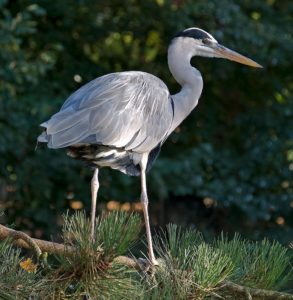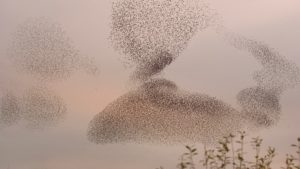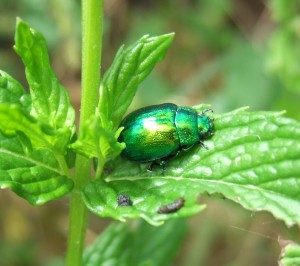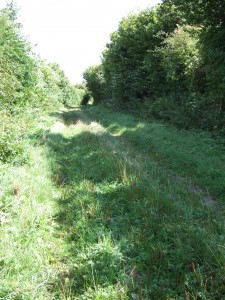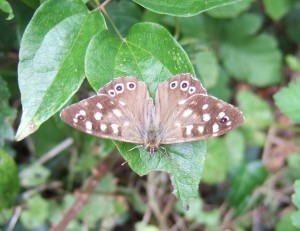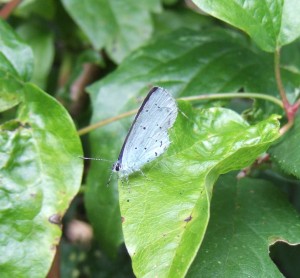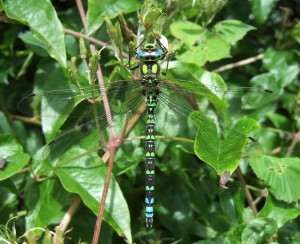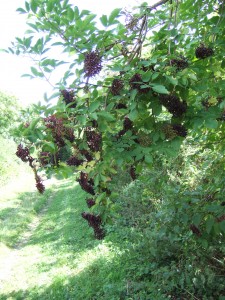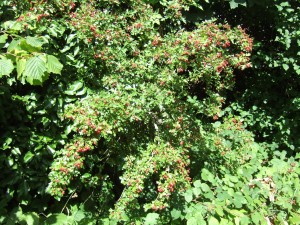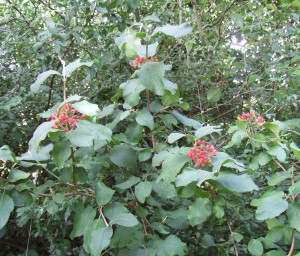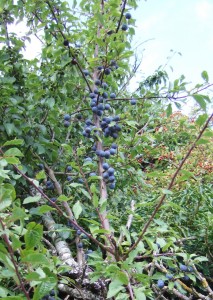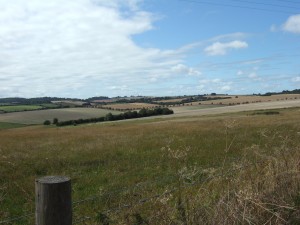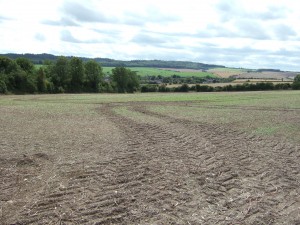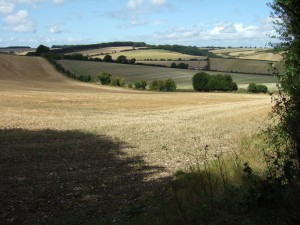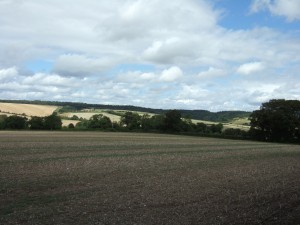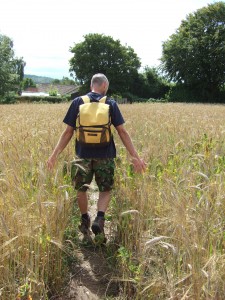We’ve had a few special bird sightings from our cottage this year, but sadly I can’t illustrate any of them with photos as my camera was not to hand …
The first was a strange occurrence indeed. In the 25 years we have lived here we have only once ever before seen a heron (Ardea cinerea) flying over the village. There is not a lot of water round us: we are on the chalk and a lot of the streams are winterbornes ie they only flow in winter, and the nearest lake is 2.25 km (1.4 miles) away and the nearest river about the same distance. So we were very surprised one morning not only to see a heron flying very low over the gardens near us, but to then see it pitch up on a telephone wire over our neighbour’s garden.
It perched there, swaying slightly, and it was the most amazing sight: such a massive bird, hanging around the cottages completely unconcerned. For such a huge, ungainly bird we were very impressed at its balancing act. It stayed for a few minutes, and then flew off, leaving us delighted.
The second lovely sighting was earlier this week: a lesser spotted woodpecker (Dryobates minor) on one of the telephone poles (I’m not going to call it a telegraph pole because we’re not living in Downton Abbey times any more), going up and down poking insects out of the drilled holes in the pole, and also banging away at the wood.
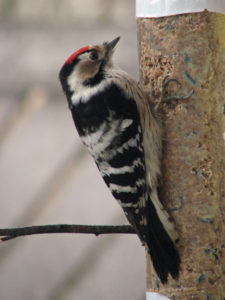
Lesser spotted woodpecker (Dryobates minor). Imagine this, but on a telephone pole … Photo by Zaltys.
He flew off and then was back again, scurrying up and down the pole. We’ve seen both lesser spotted woodpeckers and green woodpeckers (Picus viridis) doing this, so there must be rich buggy harvests in all the holes.
The third sighting was last night, and a very exciting one: my first ever starling murmuration over the village. When we moved here we rarely saw starlings (Sturnus vulgaris): maybe one or two every now and then. Chap has been feeding our wild birds regularly for a few years now, and in this time we have noticed various bird species increase (and sadly, decrease – or at least, populations seem to fluctuate). One of the success stories is that of the starlings. In the last year the numbers have increased hugely – we now have a biggish flock that seems to stay around the village all day. This might well be to do in part with Chap putting out vast quantities of dried mealworms as well as sunflower seeds several times a day. The starlings (or stormtroopers, as we affectionately call them, due to their strutting walk and bolshy behaviour) come down in droves and hoover up the worms in no time, and I like to think that this regular supply of protein-rich food throughout the year has helped them thrive and breed and raise broods successfully. We regularly see twelve or fifteen juveniles perched on a television aerial or hanging round on the chimney stacks.
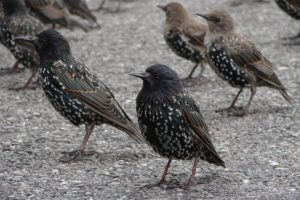
Starlings (Sturnus vulgaris). Adults left and centre front; juveniles right back. Photo by Daniel Plazanet (Daplaza).
The murmuration was so exciting to see. It was at about six thirty – so not near dusk, really, but the sky was very overcast (so overcast that we didn’t get to see the partial eclipse later on last evening, bugger it). I reckon there might have been several hundred birds, and they flew in a long, snaking, undulating group over the houses and perched in one of the large beech trees. Having seen with envy footage of huge murmurations over the Somerset Levels and elsewhere in the UK on the telly, it was magical to see one myself, and from our cottage. I hope this will be the first of many.
And here is the most wonderful video of a murmuration. Stick with it: it starts with some photos, and then …
Lucky ladies!
We have found the cheapest place to bulk-buy mealworms is Croston Corn Mill: we buy a 12.55 kg (!) bag at a time and pound-per-kilo it seems to work out much cheaper than other places, both physical shops and online. We get through a bag every two weeks or so ….
